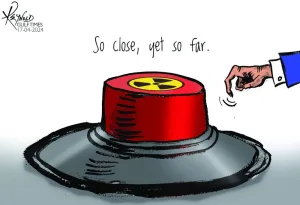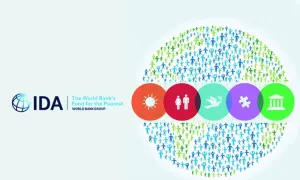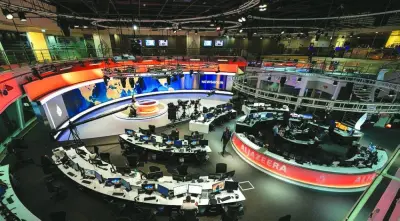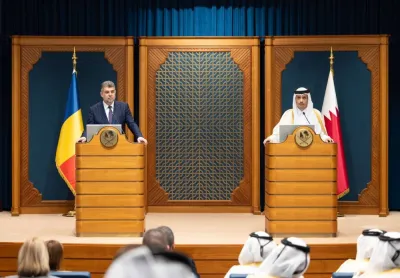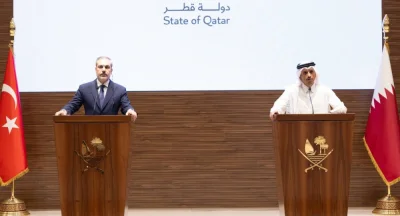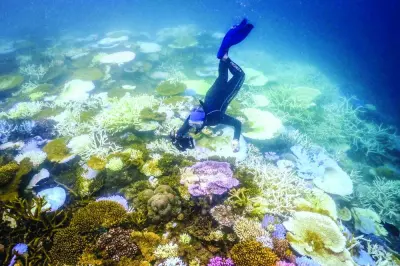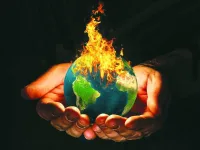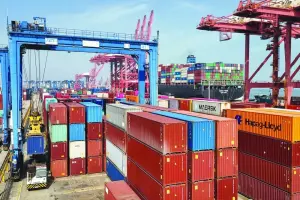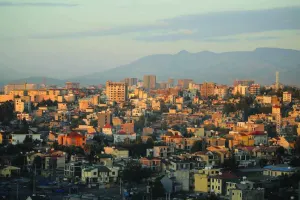On the 80th anniversary of the International Monetary Fund and the World Bank, we should reflect on what these Bretton Woods institutions have achieved since World War II. In addition to supporting unprecedented levels of global growth and poverty reduction, they have helped address and overcome myriad economic and financial crises. Now, we have an opportunity – and a duty – to take stock of their institutional mandates and ensure that they are equipped to meet the urgent challenges of the twenty-first century.It is widely recognised that the “global commons” issues that transcend national borders (including climate change, pandemics, and migration) present the greatest challenge to the current multilateral architecture. Given the urgent and existential nature of the climate challenge, the imperative for collective action is urgent. Yet progress has been too slow.A new report from the Bretton Woods Committee’s Multilateral Reform Working Group addresses the causes of this impasse and seeks a path forward. We identify “gaps” (in governance, implementation, and accountability) in both the public and the private sector, and we show why only a system-wide approach to reform will suffice.Rejecting the idea that new institutions might be created to fill these gaps, we conclude that the IMF and the World Bank are best placed to play a leadership role, owing to their global membership, financial firepower, and weighted voting structures. The recent G20 Independent Expert Group on Multilateral Development Banks has drawn similar conclusions, as has the Bridgetown Initiative. Without detracting from their existing mandates, the Bretton Woods institutions need to be further empowered.On the public-sector side, the gap in governance stems from the lack of a coordinating function within the global commons, especially when it comes to financial and economic policies to address climate change. To fill this gap, we propose creating ministerial-level decision-making “councils” at both the IMF and the World Bank. Given adequate political heft, these councils would address what is missing in the current architecture. The IMF’s two existing ministerial bodies, the International Monetary and Financial Committee and the Development Committee, are currently advisory; but they could transition to a decision-making role.The new councils would be more inclusive, giving more voice to middle- and low-income countries (MLICs). Member states would vote proportionally according to their quota share, but they would do so individually, rather than by constituency (as is the case under the current model). This would also enable “coalitions of the willing” to form around specific issues.A second major public-sector gap concerns implementation. Though many efforts to address global challenges are underway, their disparate nature means that the whole is less than the sum of the parts. The Bretton Woods institutions must be empowered to support MLICs as they work toward national goals such as expanding green energy, phasing out coal, accelerating climate-adaptation programmes, and protecting forests.To that end, the IMF can help shape and assess the fiscal and financial frameworks according to which green policies and investments are adopted and implemented in advanced and developing economies. The World Bank can help with financing adaptation efforts, designing energy strategies, and introducing financial instruments to facilitate climate-change mitigation in co-ordination with other multilateral bodies and the private sector. And regional multilateral development banks can expand their role by helping countries de-risk investments in climate-related projects.The third gap concerns accountability and how we measure impact. Accepting the principle that what gets measured gets done, we recommend that the IMF and the World Bank’s existing evaluation arms (working with their peers in partner institutions) start conducting systematic reviews of climate financing and implementation plans.That brings us to the private sector, which also has an indispensable role to play. Most greenhouse-gas emissions emanate from publicly listed corporations and state-owned enterprises, and the bulk of climate financing will need to come from the private sector, including asset managers. The IMF and the World Bank again are uniquely positioned to help governments implement common standards, practices, and instruments, ultimately ensuring that private-sector efforts are aligned with global goals.Filling gaps in the private sector’s current approach will require mandatory global disclosure standards (along the lines of what the International Sustainability Standards Board has proposed) to ensure accurate measures of private entities’ carbon footprints, net-zero goals, and corresponding asset allocations. Mandatory disclosure would provide more accurate price signals to capture the true costs of fossil fuels, as well as foster more public- and private-sector collaboration.The IMF could further incorporate such monitoring in its surveillance work. Already a vocal proponent of carbon taxes, the Fund can offer objective assessments of the global macroeconomic and trade implications of cross-border carbon-adjustment taxes, the potential international sharing of their proceeds, and how such taxes can complement global carbon markets. Moreover, together with the World Bank, the IMF can develop tools to help MLICs respond to these regimes.Throughout their 80-year history, the IMF and the World Bank have demonstrated their ability to adapt to changing global circumstances. In the face of increasingly complex global challenges, both must evolve to capitalise on their respective comparative advantages. In the case of climate change, especially, we believe they are the only global institutions that can mobilise public- and private-sector responses at the necessary pace and scale.To fulfil these augmented roles, both institutions will need additional financial capacity. If they can focus on closing gaps in public- and private-sector governance, implementation, and accountability, they will amplify their own impact and secure future paid-in capital from their shareholders. We hope that all 190 member states meeting in the coming days for the IMF and World Bank Spring Meetings will recognise the need to strengthen both bodies. — Project SyndicateJoaquim Levy, a former finance minister of Brazil, is Co-Chair of the Bretton Woods Committee Multilateral Reform Working Group and a former chief financial officer at the World Bank Group.Axel A Weber, Co-Chair of the Bretton Woods Committee Multilateral Reform Working Group, is a former chairman of UBS Group and president of the Deutsche Bundesbank.Siddharth Tiwari, principal author at the Bretton Woods Committee Multilateral Reform Working Group, is a former senior official at the Bank for International Settlements and the International Monetary Fund.
Opinion
Wednesday, April 17, 2024
Wednesday, April 17, 2024
Thursday, April 18, 2024
Sunday, April 14, 2024
Tuesday, April 09, 2024
Tuesday, April 09, 2024
The world’s coral reefs are bleaching
Tuesday, April 16, 2024
Global collaboration required to mitigate climate change impacts on food security, agriculture
Saturday, April 13, 2024






